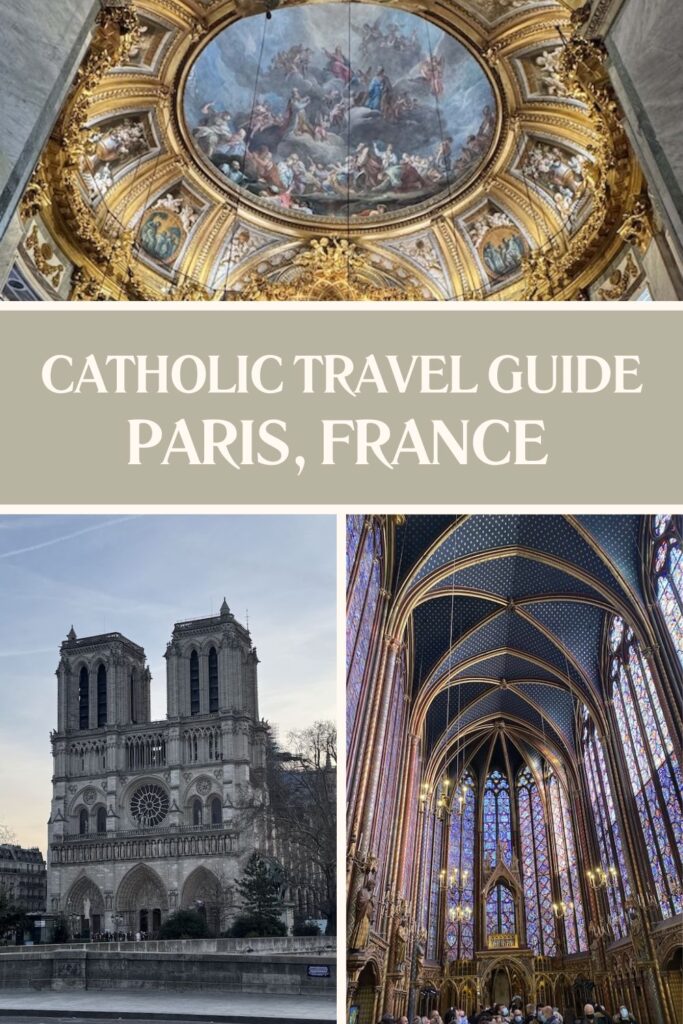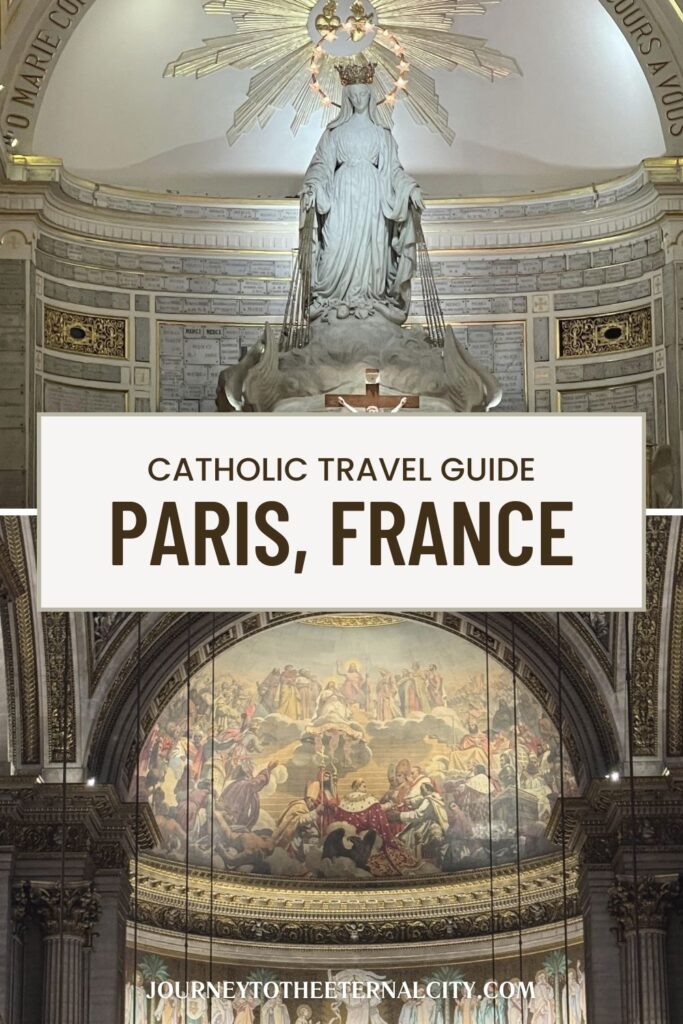Paris, France Travel Guide – Catholic Edition
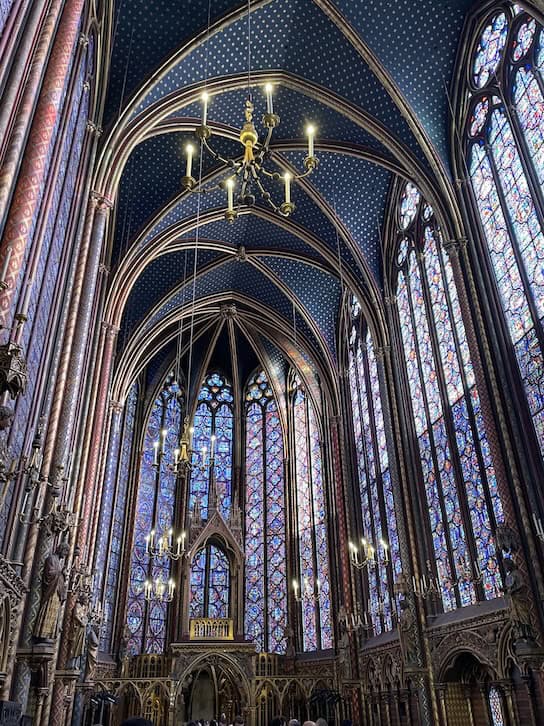
With nearly 200 churches across the city of light, there’s no shortage of sacred places to discover.
The french capital is a place where faith and history meet. As the “Eldest Daughter of the Church,” France played a key role in the early spread of Christianity—and that legacy lives on in the heart of its capital.
From grand cathedrals and sacred relics to quiet chapels where saints once prayed, the city of Paris offers a deeply Catholic journey. Whether you’re here to follow in the footsteps of saints or simply to pray in a beautiful church, please use the information below as a guided tour to help you make the most of your pilgrimage.
*As an Amazon Associate I earn from qualifying purchases.
Top Catholic Sites to See in Paris
1. Notre-Dame de Paris Cathedral
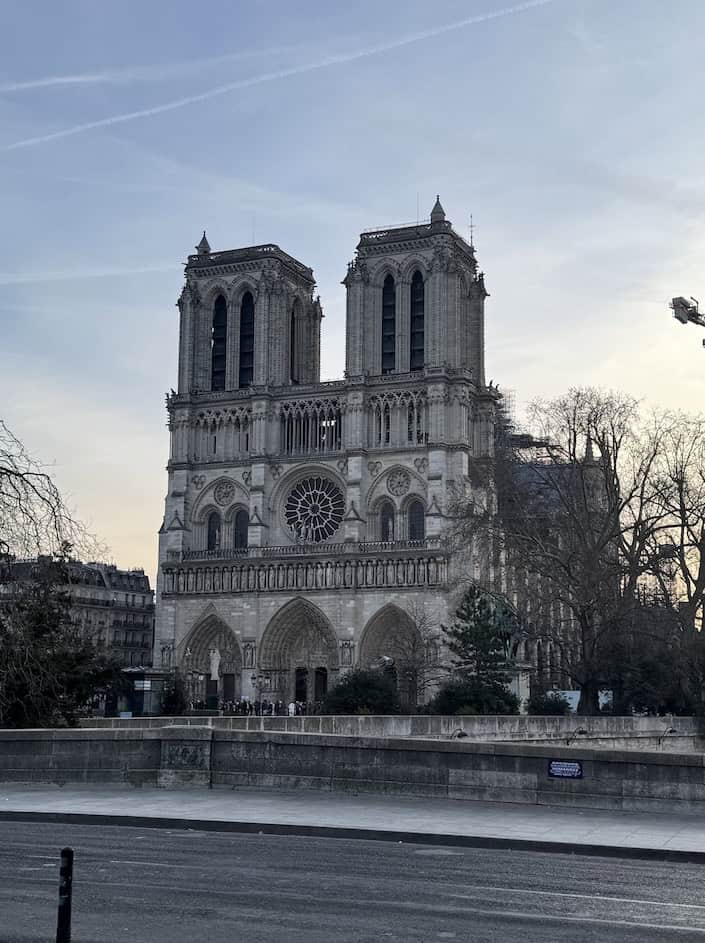
One of the world’s most famous cathedrals, Notre-Dame should be your starting point. Situated on the Île de la Cité near the Latin Quarter, it stands as an iconic symbol of the capital and a masterpiece of Gothic architecture; holding far greater historical significance than even the Eiffel Tower.
For over 800 years, the Gothic cathedral proclaimed the Catholic faith. As the spiritual heart of France across the centuries, it drew countless pilgrims and saints alike.
Saints that have visited Notre Dame
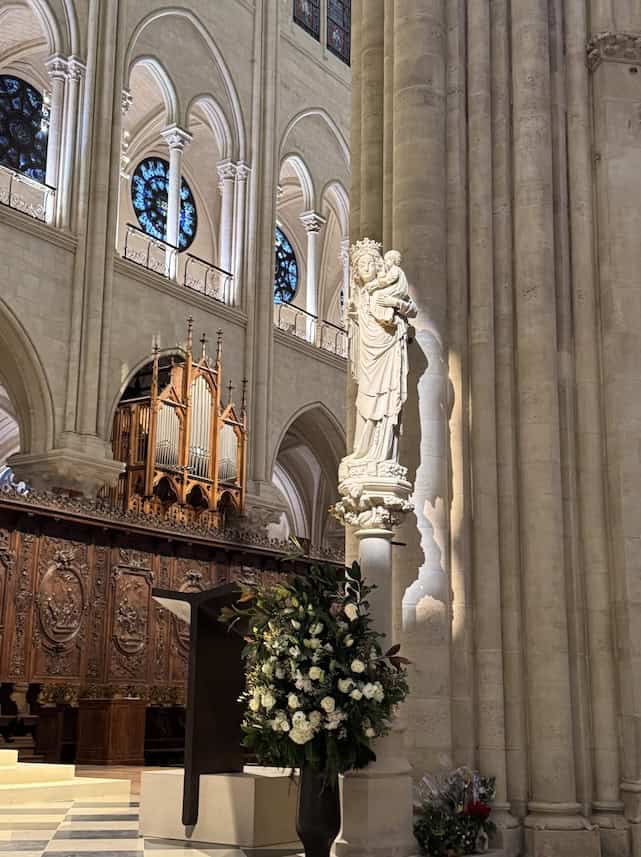
In medieval times, St. Thomas Aquinas and St. Dominic walked the aisles of Notre Dame cathedral during their years in Paris, where they studied and taught near the cathedral. King Saint Louis IX once carried the Crown of Thorns in a solemn procession through Paris; while he later enshrined it in Sainte-Chapelle, Notre-Dame also played a role in its veneration.
Jesuit founders St. Ignatius of Loyola and St. Francis Xavier may have knelt in prayer here during their studies at the University of Paris. In more recent centuries, the cathedral remained a place of pilgrimage for saints such as Saint Vincent de Paul, St. Louise de Marillac, and probably St. Thérèse of Lisieux.
Interior of Notre Dame Cathedral
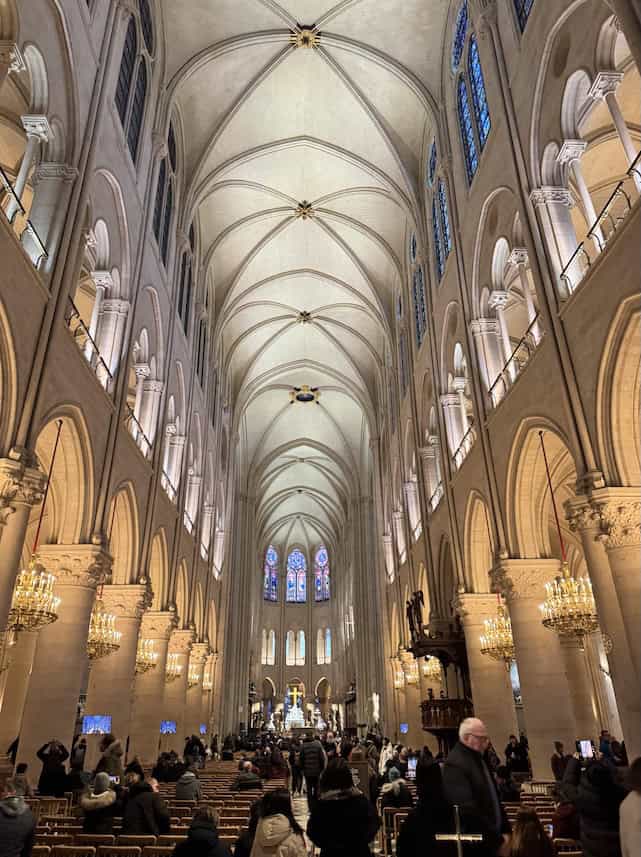
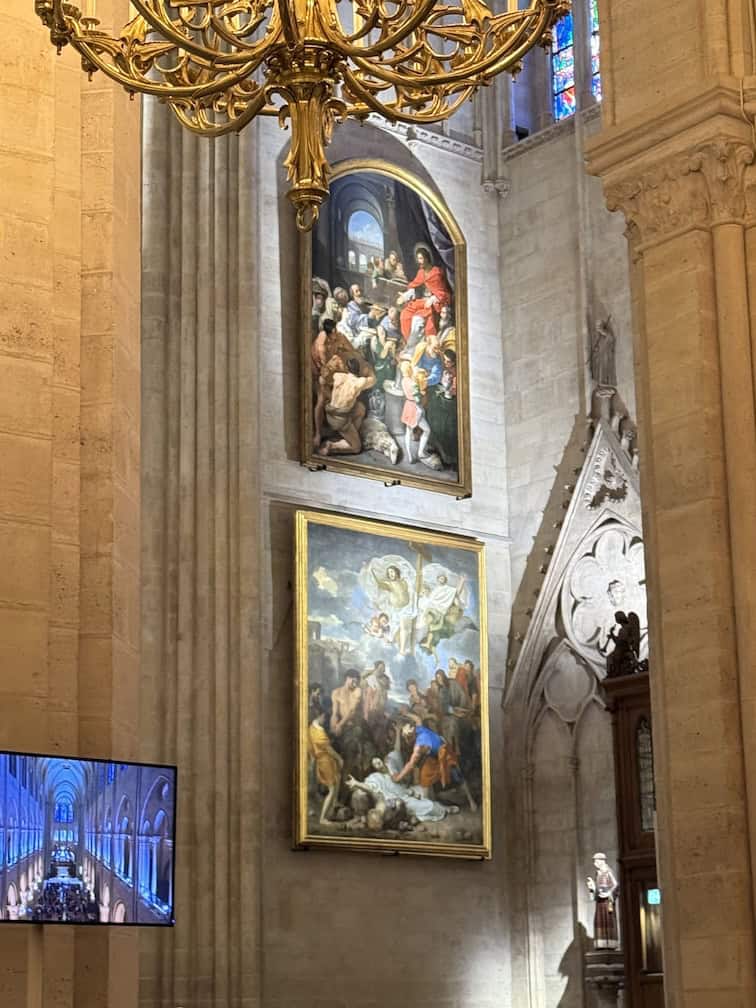
The cathedral’s soaring vaults, radiant stained glass, and sculpted stonework were crafted to catechize, to tell the story of salvation. Dedicated to the Blessed Virgin Mary, it continues to serve as a center of Marian devotion and spiritual life.
Following the significant damage from the devastating fire of 2019, teams of artisans and experts worked tirelessly to restore and renew this sacred space. In December 2024, its interior once again opened to the public. The nave now gleams with luminous limestone, vibrant glass, and gleaming chandeliers, revealing the medieval artistry more vividly than seen in generations. The reopening marked a kind of resurrection, a reminder that the Church, like her buildings, may suffer wounds, yet is continually renewed by grace.
Notre-Dame also safeguards some of the Church’s most precious relics. The Crown of Thorns, worn by Our Lord Jesus Christ during His Passion was brought to France in the 13th century by Saint Louis. While no longer on daily display, this sacred object is presented for veneration during special liturgies, especially in Holy Week.
In the sacristy, visitors can explore a remarkable collection of liturgical treasures: ancient chalices, richly embroidered vestments, and centuries-old reliquaries that reflect the cathedral’s enduring legacy of faith.
2. Sainte-Chapelle
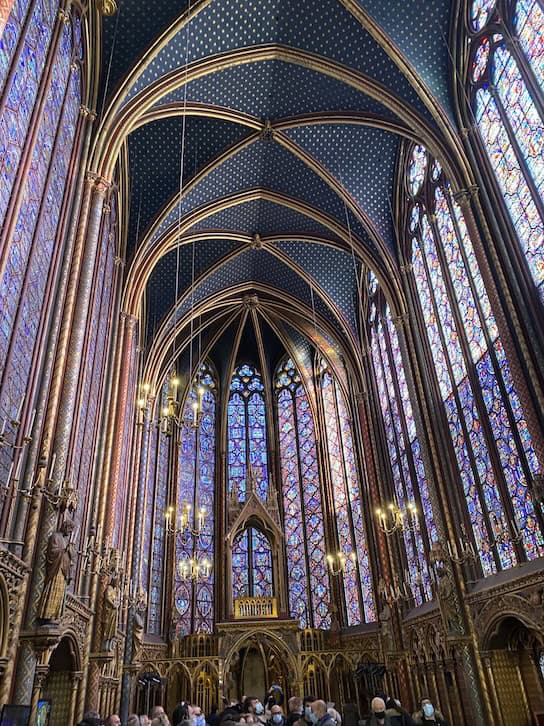
Also located on the Île de la Cité, in the midst of the Seine River and just steps from Notre-Dame, the Sainte-Chapelle is a breathtaking 13th-century Gothic chapel commissioned by King Louis IX to house the Crown of Thorns and other relics of Christ’s Passion. This chapel was essentially commissioned by King Louis IX to be a huge reliquary, which is just so extraordinary.
Though relatively small, this royal sanctuary is a gem of Rayonnant Gothic architecture.
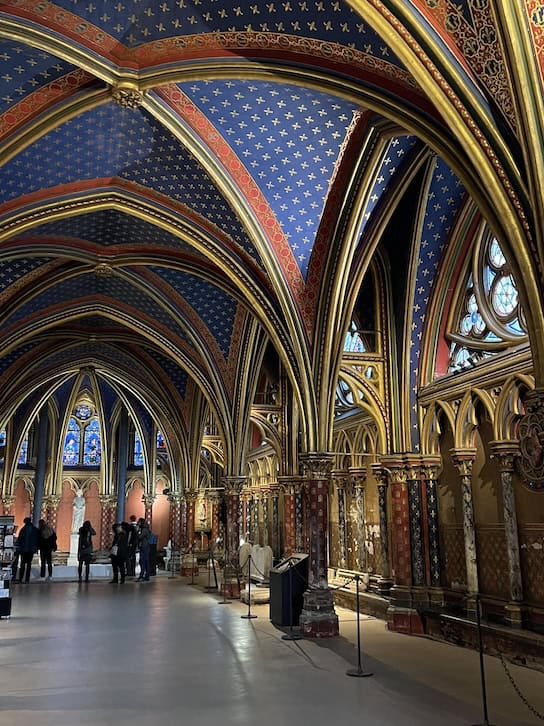
Most precious are its stained glass windows: 15 towering panels that illustrate over a thousand scenes from the Bible, from Genesis to the Resurrection. When sunlight filters through the vibrant glass, the chapel is bathed in a beautiful kaleidoscope of color and light, immersing visitors in a visual narrative of salvation history.
Though the Crown of Thorns has since been relocated to Notre-Dame, the Sainte Chapelle remains a sacred destination, especially for those drawn to meditate on Christ’s Passion and the spiritual legacy of France’s Catholic monarchy and rich history.
There is usually a line to enter and view Sainte-Chapelle. Fees tend to differ depending on the season so make sure to check ahead of time for the most up-to-date information. We highly recommend that you book tickets and reservations ahead of time from the official website here.
3. The Chapel of Our Lady of the Miraculous Medal
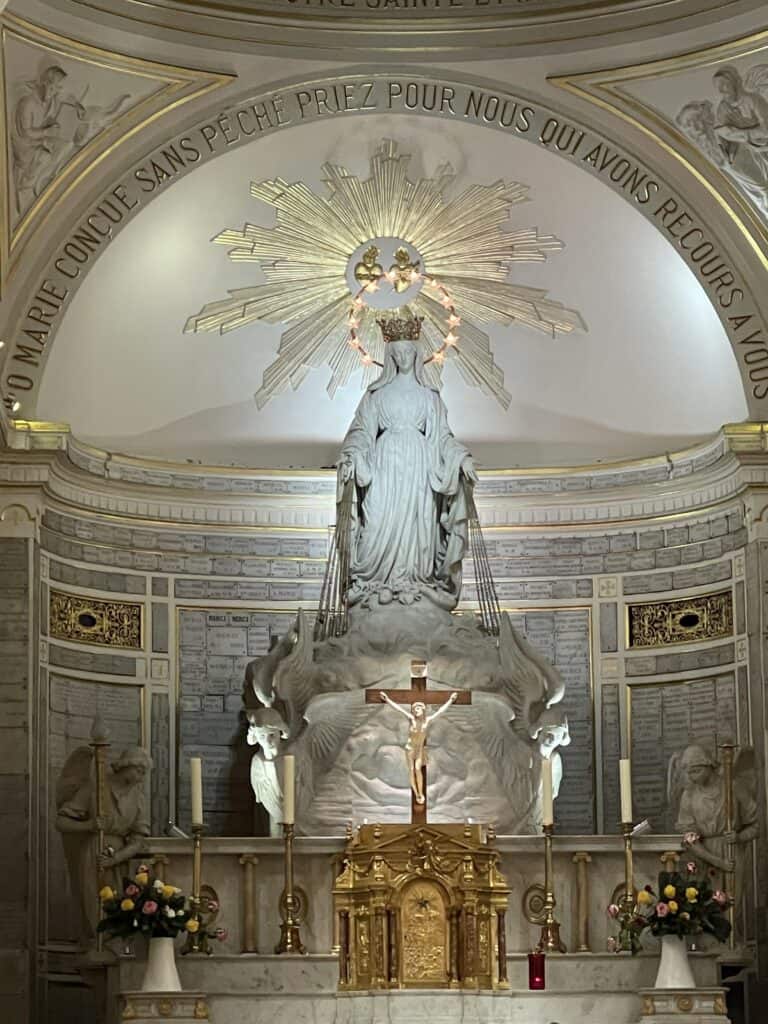
At 140 Rue du Bac in Paris, you will find the Shrine of the Miraculous Medal. It was here in 1830 that the Blessed Virgin Mary appeared to a young novice, St. Catherine Labouré, and entrusted her with a message that would touch the world.
Mary expressed her deep concern for the spiritual condition of the world, warning of sorrowful times ahead, political unrest, persecution, and a decline in faith. But even amid these warnings, she offered hope:
“Come to the foot of this altar. Here, graces will be poured out on all who ask for them with confidence and fervor.”
That promise was not just for 19th-century France, it’s for us today too. Mary instructed St. Catherine to:
“Have a medal struck according to this model. All who wear it will receive great graces, especially if they wear it around the neck. Graces will abound for those who wear it with confidence.”
This Miraculous Medal quickly became one of the most beloved sacramentals in the Church. It is a daily reminder of Mary’s maternal care and the graces she obtains for us.
Wearing it is a quiet but profound “yes” to God’s grace, just like Mary’s own fiat. It draws us closer to her heart and, through her, into deeper union with Christ.
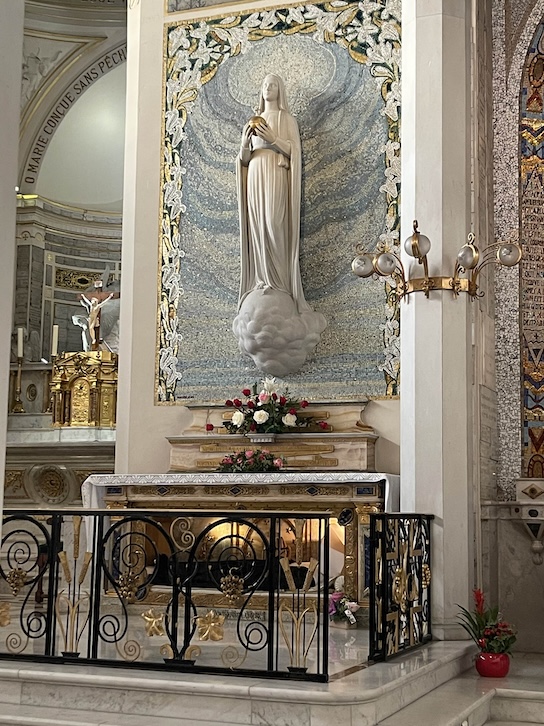
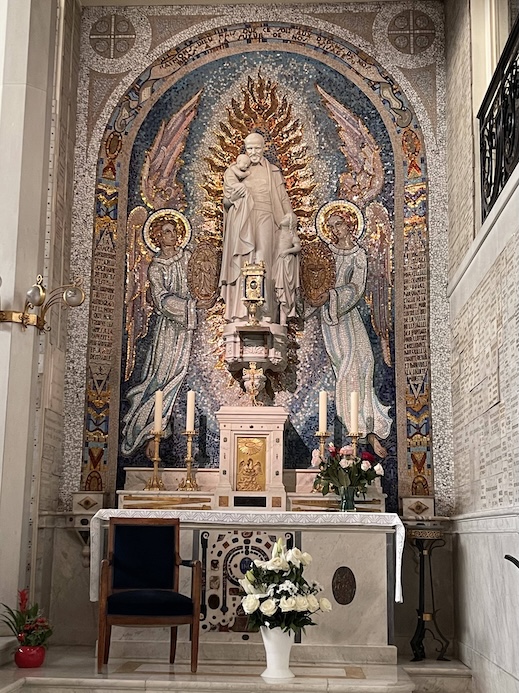
Miraculous Medal Meaning
The medal’s design is rich in meaning. On the front, Mary stands atop the globe with her arms outstretched, rays of light flowing from her hands, a sign of the graces she longs to pour into our lives as the “Mediatrix of all graces”.
On the back, you will find inscribed the prayer, “O Mary conceived without sin, pray for us who have recourse to thee”.
At the center of the back an intertwined “M” and cross speak to her profound union with Jesus, especially in His Passion. Beneath them are the Sacred Heart of Jesus, crowned with thorns, and the Immaculate Heart of Mary, pierced by a sword, reminders of their shared suffering and sacrificial love.
Surrounding it all are twelve stars, representing the apostles and, by extension, the Church. This calls each of us to join in Christ’s mission, uniting our hearts with His and Mary’s in love and service.
Our Lady of the Miraculous Medal Chapel
Inside the chapel, the incorrupt body of St Catherine Laboure offers a quiet yet powerful witness to her holiness. Just nearby, in a small reliquary, rests the heart of St Vincent de Paul—the same heart that once appeared to Catherine in a vision. A tireless servant of the poor, his preserved heart remains a symbol of selfless love.
Perhaps most moving of all is the humble chair where Mary sat during the apparitions.
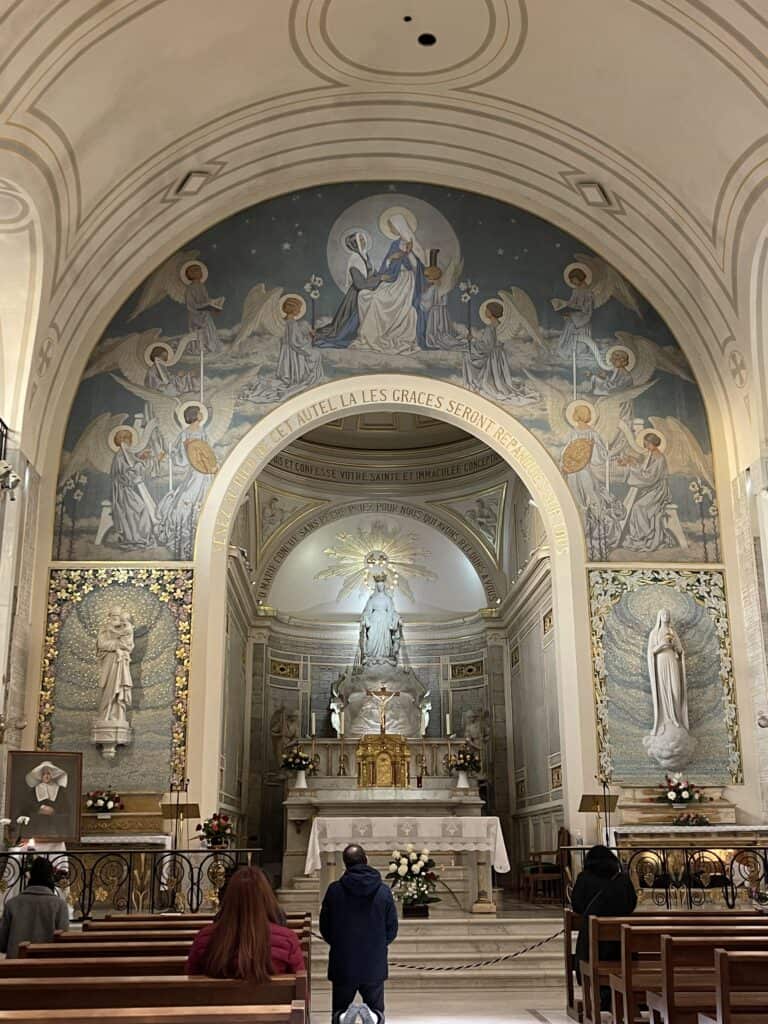
There is confession and daily Mass offered at this beautiful chapel. Another impressive experience we had here was around the time the Angelus is prayed. The church was packed with people coming there just to recite the Angelus together at noon.
There is also a great gift shop ran by the Daughters of Charity of St. Vincent de Paul. There you can buy Miraculous Medals of all sizes and quantities. They even sell ones made of real silver or gold, if you’re looking for a more durable medal to wear around. What better gift or souvenir for yourself than to have a Miraculous Medal straight from the place where Mary gave it to St. Catherine.
Mary revealed her identity to St Catherine as the Immaculate Conception, over two decades before the Church would declare this dogma in 1854. Just a few years later in 1858, she appeared again to St Bernadette in Lourdes, using the same title: “I am the Immaculate Conception.”
This beautiful continuity between Rue du Bac and Lourdes shows how Mary was preparing the Church, through the hearts of two humble servants, to embrace the truth of her sinless nature and her role in God’s plan of salvation.
4. Basilique du Sacré-Cœur
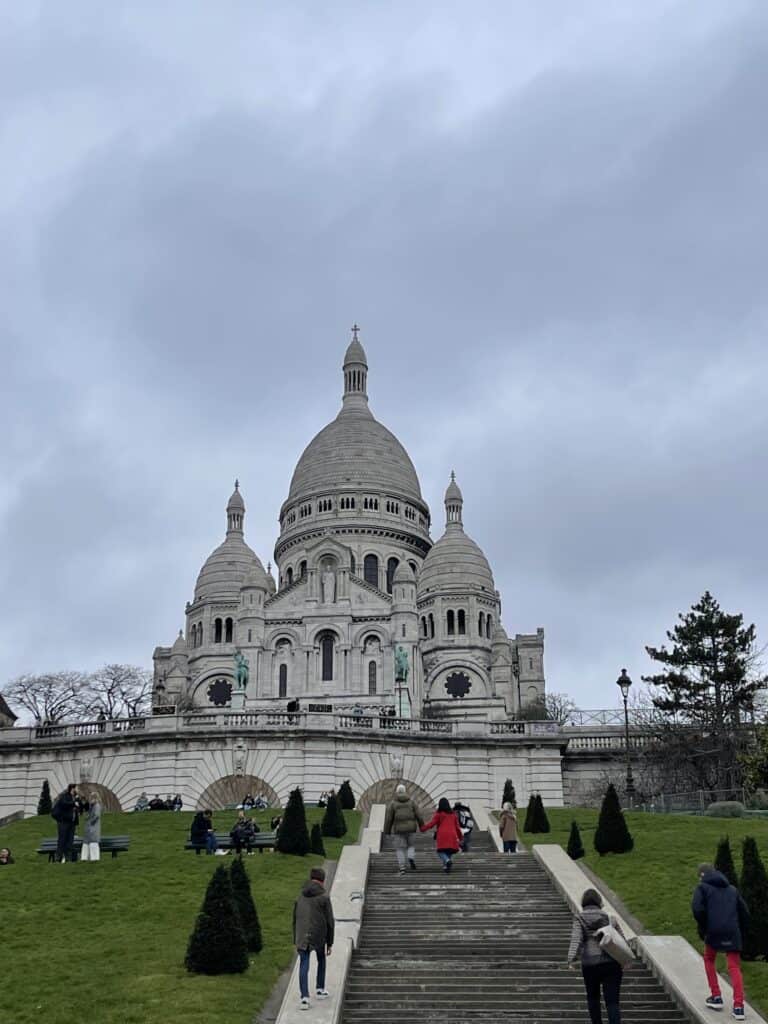
Perched atop Montmartre Hill overlooking the city, the Sacré Coeur Basilica is a place of ongoing prayer and perpetual adoration. Its origins lie in the deeply Catholic response to the trauma of the Franco-Prussian War and the bloody aftermath of the Paris Commune.
In 1875, sensing a need for national reparation and spiritual renewal, French Catholics began building what would become one of the city’s most spiritually significant sites.
After France’s defeat in 1870, two lay Catholics, Alexandre Legentil and Hubert Rohault de Fleury, took a solemn vow to build a church dedicated to the Sacred Heart if Paris was spared further devastation. The Basilica of the Sacred Heart arose as a national act of reparation for a “century of sins” dating back to the French Revolution.
Sacred Heart Devotion
The devotion to the Sacred Heart was inspired by the 17th-century private revelations to St. Margaret Mary Alacoque in Paray le Monial, in which Jesus revealed His heart ablaze with extraordinary love, wounded by indifference and sin.
Her visions renewed focus on Christ’s tender mercy and His desire for souls to return to Him in trust and love. The construction of Sacré-Cœur answered that call, to place Christ’s merciful love at the very heart of the nation.
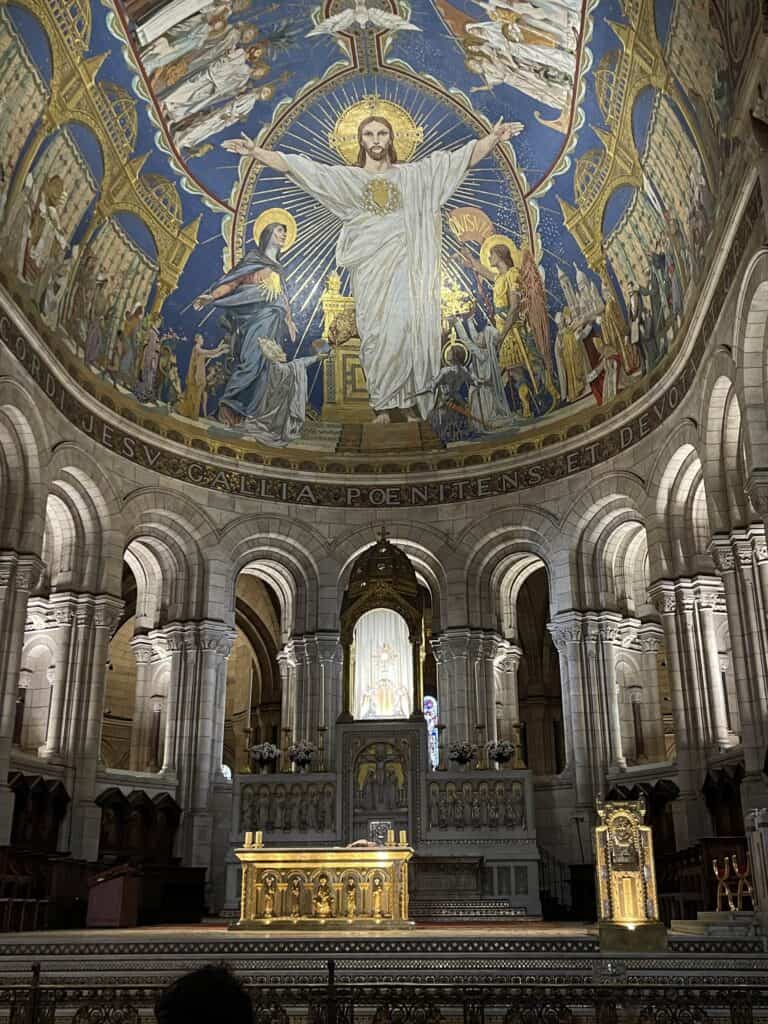
The Link to St. Therese of Lisieux
In 1887, a young St Therese of Lisieux visited Sacré-Cœur during a pilgrimage to Rome to seek special permission from Pope Leo XIII to enter the Carmelite convent early. Deeply moved by the basilica’s beauty and sacred atmosphere, she spent time in prayer and adoration. Though Paris dazzled her, her heart remained fixed on Christ, and this quiet visit became one of many moments deepening her desire to give her life fully to God.
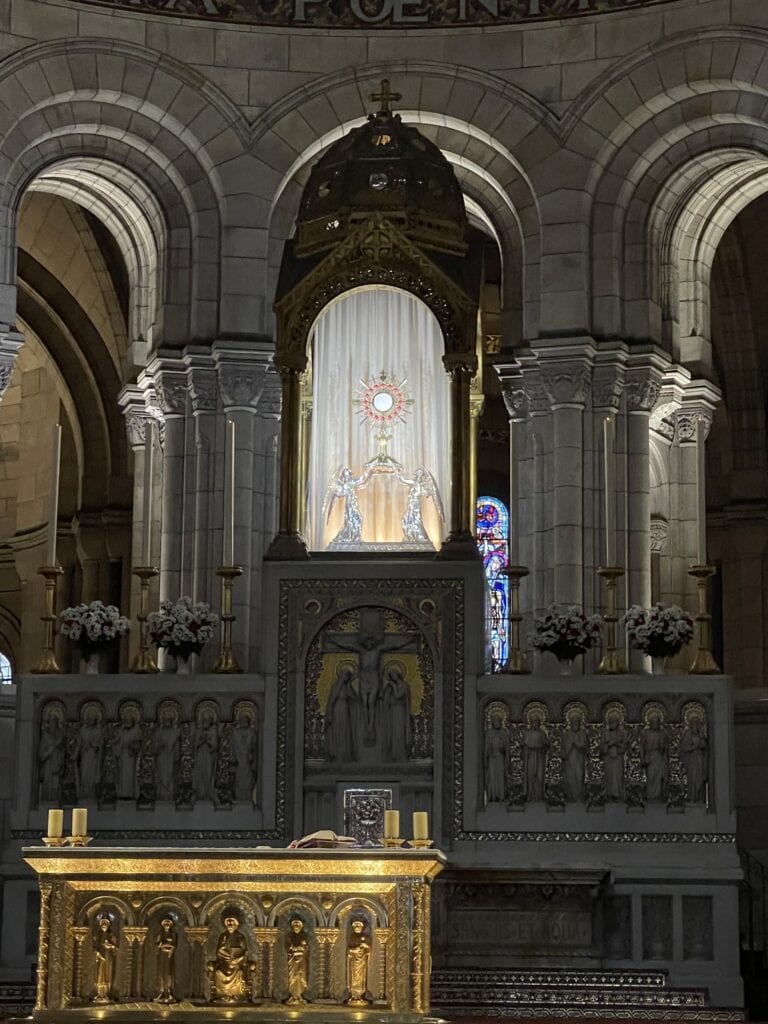
Inside Sacré-Cœur, your eyes are drawn to the immense mosaic in the apse, the largest in France, depicting Christ with an open heart. Above the altar, a golden monstrance marks uninterrupted Eucharistic adoration since 1885.
Venerable Archbishop Fulton J. Sheen was known to have spent entire evenings in adoration there. He was always so in awe of the other ladies and gentlemen that adored Our Lord all night long.
Whether in Mass or silent prayer, the basilica invites deep contemplation of Christ’s real presence in the Eucharist.
This Montmartre district, known as “Mont des Martyrs,” recalls its roots as a place of early Christian martyrdom; most notably Saint Denis, the first bishop of Paris, who was beheaded here in the third century. While the precise spot is debated, archaeological discoveries confirm the hill’s importance as a site of Roman burials and early Christian worship.
Church of Saint-Pierre de Montmartre
A short walk from Sacré-Cœur leads to the Church of Saint-Pierre de Montmartre, one of Paris’s oldest churches and often overlooked by tourists. Here, St. Ignatius of Loyola and his first companions founded the Jesuit order in 1534, marking a pivotal moment in the Catholic Counter-Reformation.
Though the cobblestone streets and nearby Place du Tertre, where artists gather daily, may seem distant from the basilica’s solemn interior, Montmartre vividly reminds us that in a city where the sacred and secular meet, faith lives in every corner of life, not just within church walls.
5. St. Etienne du Mont
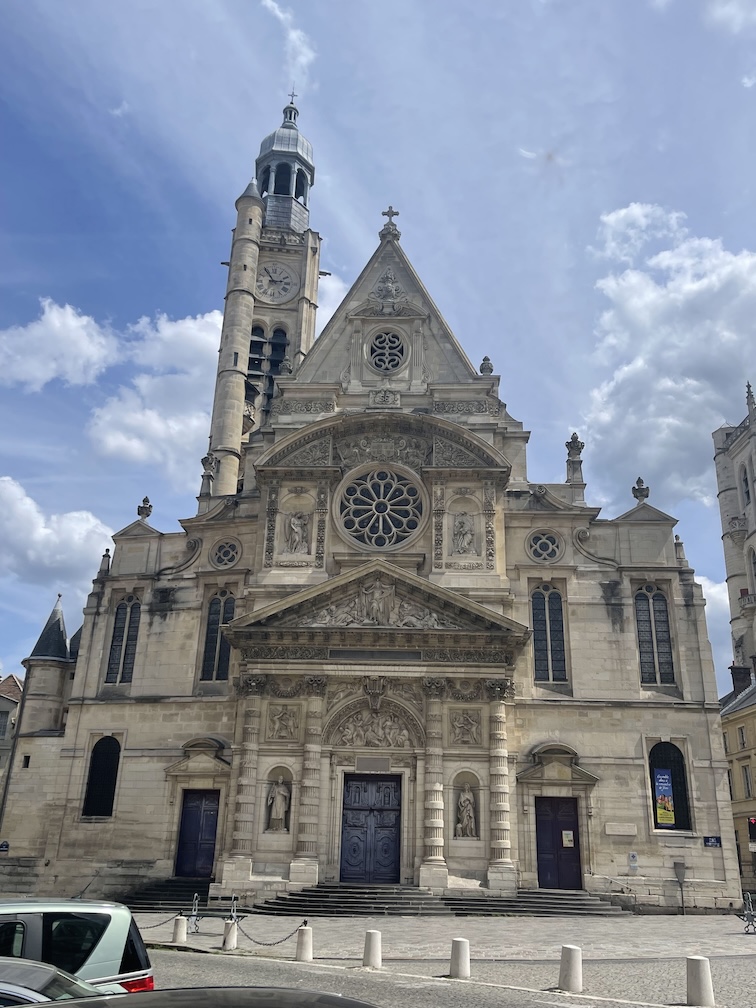
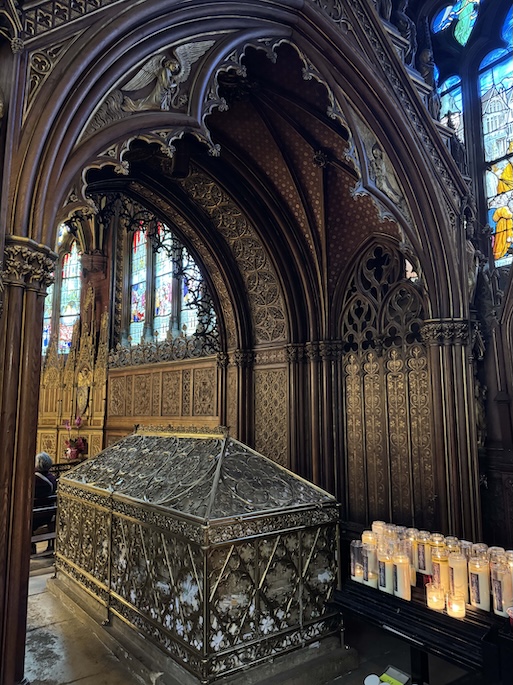
Located just steps from the Panthéon, St. Étienne du Mont holds deep spiritual significance for Catholics in Paris and is well worth a visit. It houses the shrine and tomb of Saint Genevieve, the city’s patron saint, whose steadfast faith and prayers protected Paris from the Hun invasion led by Attila in the 5th century.
When panic spread and citizens prepared to flee, Genevieve rallied the women to stay, fast, and pray, prophesying that Paris would be spared. When Attila’s army turned away, her prophecy was fulfilled, securing her legacy as the city’s protector.
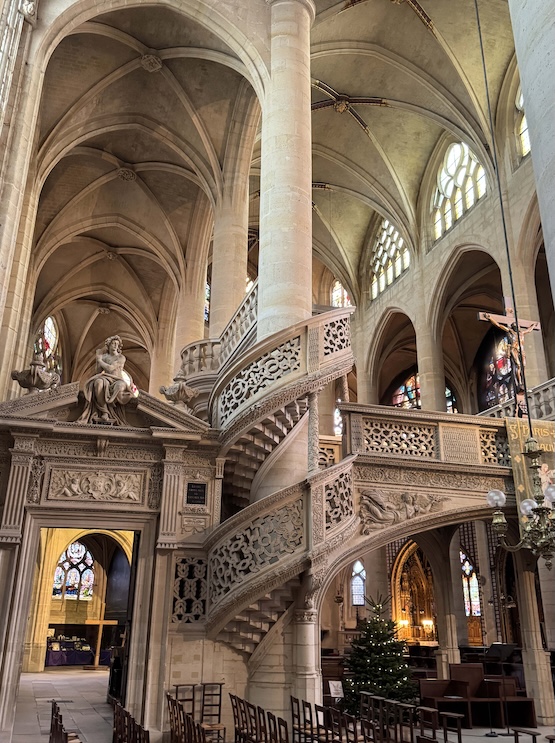
Architecturally, St. Étienne du Mont is a unique blend of late Gothic and early Renaissance styles, giving it a distinctive character among Parisian churches. One of its most remarkable features is the intricately carved jubé, a rare survivor of medieval craftsmanship.
This elegant stone partition, flanked by delicate spiral staircases, is the only one of its kind still standing in Paris. Most jubé were dismantled across Europe during the Counter-Reformation to improve altar visibility, making this one a vestige of an earlier era of church architecture.
The church’s high vaulted ceilings and carefully crafted wooden choir stalls enhance its quiet dignity and sense of reverence. Stained-glass windows filter soft, colored light into the interior, illuminating scenes from Scripture and the lives of saints, including Saint Genevieve herself.
The mix of architectural styles reflects a transition of eras and the living history of the Church in Paris.
Blaise Pascal
St. Étienne du Mont also connects to other facets of Paris’s Catholic heritage: it houses the heart of Blaise Pascal, the great Catholic philosopher and mathematician. Known for his scientific genius, Pascal underwent a dramatic religious conversion in 1654, turning away from worldly pursuits toward a life of intense faith.
For many, the church and Pascal’s heart symbolize how faith and reason, prayer and intellect, can coexist and enrich each other.
6. St. Sulpice
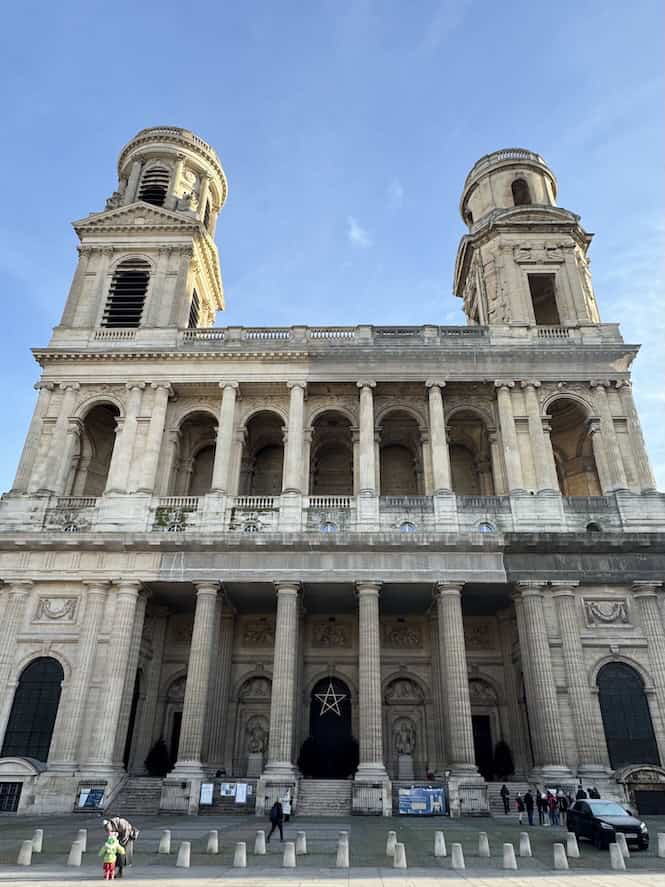
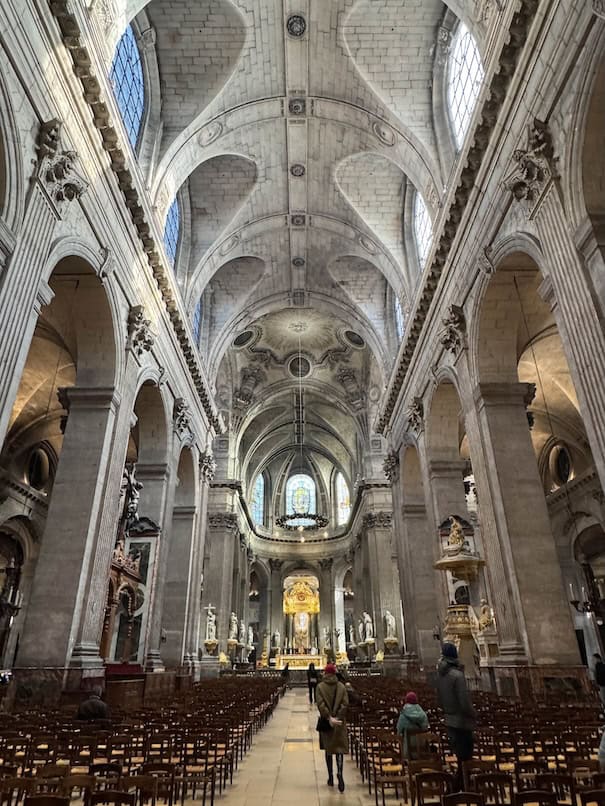
St. Sulpice, one of the largest churches in Paris, it is often overshadowed by Notre-Dame in tourist guides, yet it holds immense spiritual and artistic significance. Its striking Baroque façade, with its famously asymmetrical towers, immediately draws the eye. Inside, the wide nave and luminous interior create a sense of openness and quiet welcome.
At the heart of St. Sulpice is the majestic Chapel of the Blessed Virgin, a serene space that stands apart from the main nave. The chapel’s focal point is a marble statue of the Virgin and Child by the sculptor Jean-Baptiste Pigalle, which is bathed in a dramatic play of light from hidden windows above.
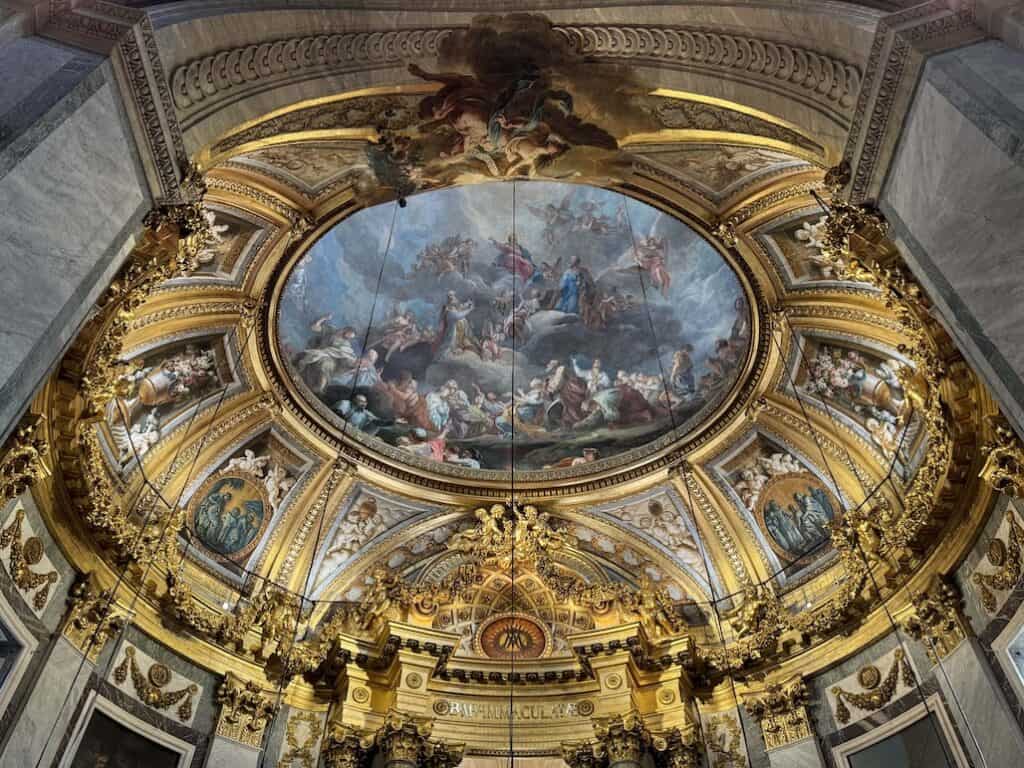
This sculpture replaces an earlier silver statue that was melted down during the French Revolution. In front of this statue, a large 18th-century painting of the Immaculate Conception by artist Carle van Loo portrays Mary’s purity and active role in God’s plan, inviting visitors to a moment of quiet prayer and reflection on her spiritual legacy.
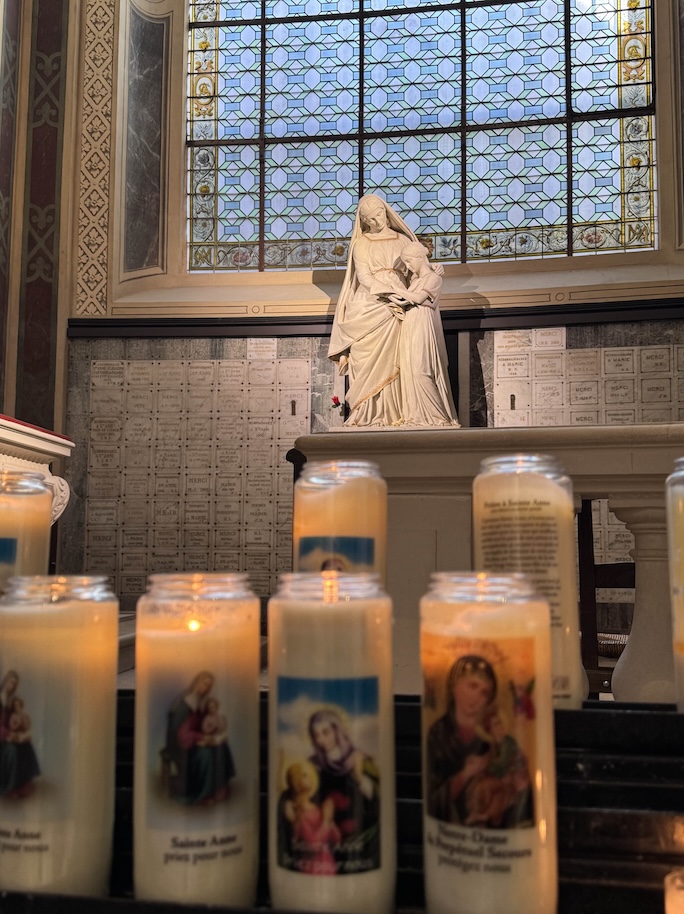
Just steps away is another beautiful, often overlooked altar dedicated to St. Anne, mother of the Blessed Virgin. This quiet corner of the church invites intercession to the grandmother of Christ, especially from couples seeking the grace of having children or those longing for family healing.
The Chapel of the Holy Angels, found in the first side chapel on the right, hosts three dramatic murals by Eugène Delacroix: Jacob Wrestling with the Angel, Heliodorus Driven from the Temple, and Saint Michael Vanquishing the Demon.
In the north transept, visitors can also discover a surprising scientific feature: a brass line called a gnomon, which runs across the floor and up a marble obelisk. Built in the 18th century, this instrument tracked the sun’s movement to help determine the date of Easter.
7. La Madeleine
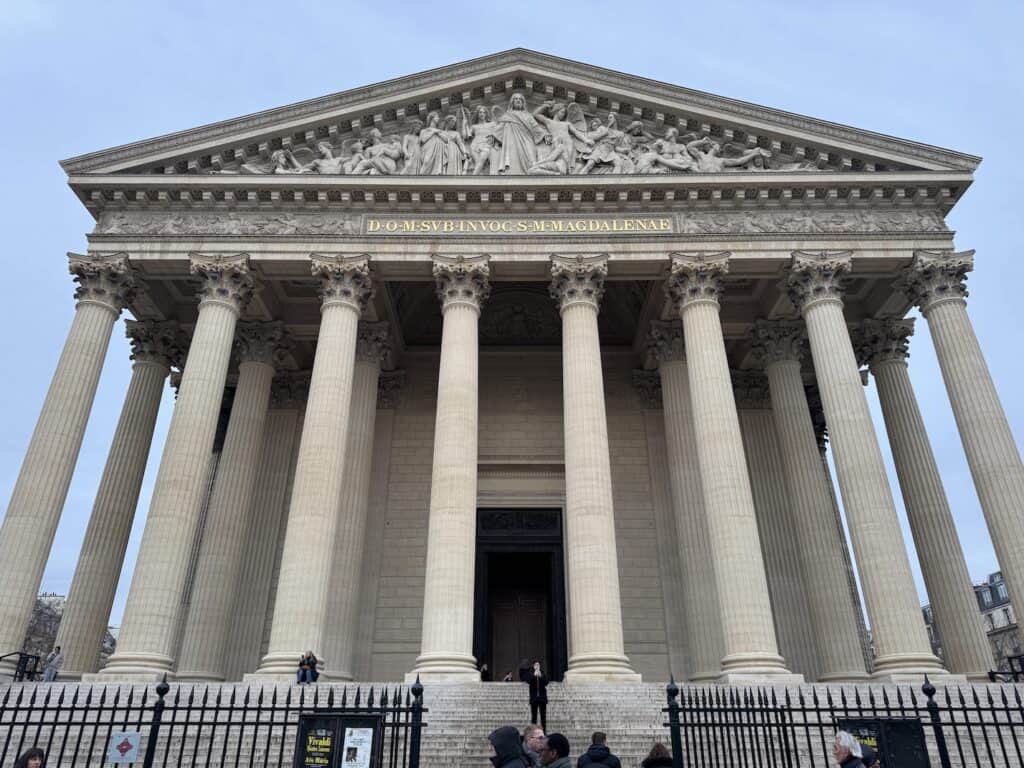
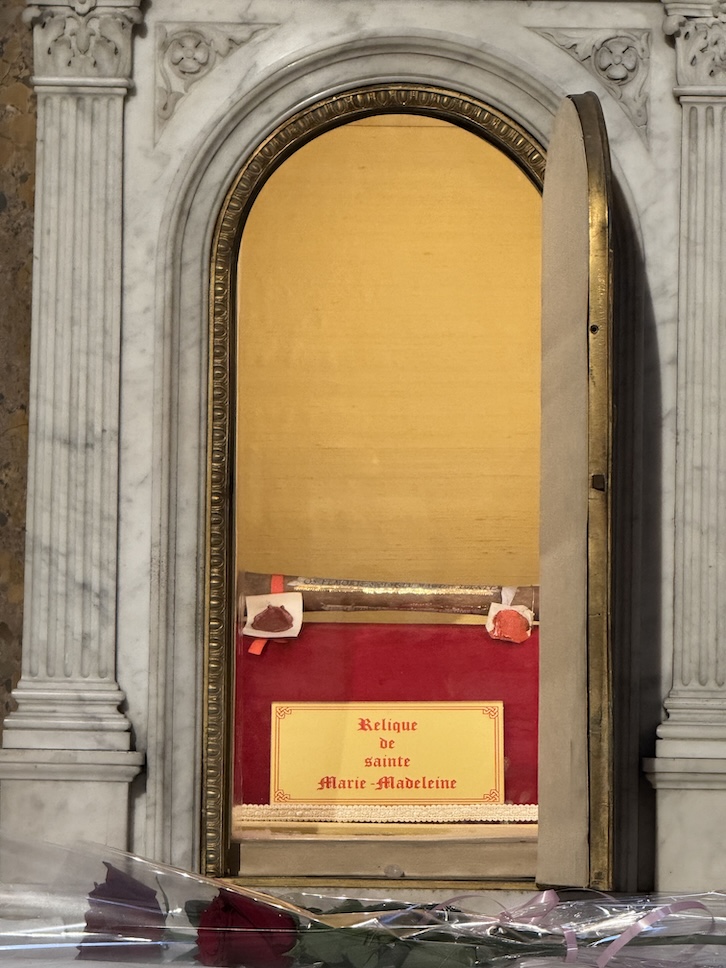
From the outside, La Madeleine, with its tall Corinthian columns and classical design, looks more like a Greek temple than a Catholic church. This is no accident.
Originally begun under King Louis XV as a parish church, construction was interrupted by the French Revolution. Napoleon later repurposed the unfinished structure as a “Temple to the Glory of the Grand Army.” After his fall, the restored monarchy chose to consecrate it as a church, while retaining its grand, non-traditional design.
The church honors St. Mary Magdalene, the first witness of the Resurrection and a model of repentance and love for Christ. Some of her relics are preserved here, inviting quiet veneration and reflection on her deep faith and role as the “apostle to the apostles.”
Above the outside entrance, a massive frieze shows the Last Judgment, with Christ in glory and Mary Magdalene kneeling in intercession. Inside, la Madeleine has a quiet, solemn beauty. Its dim lighting, spacious nave, and striking statues create an atmosphere of stillness and prayer.
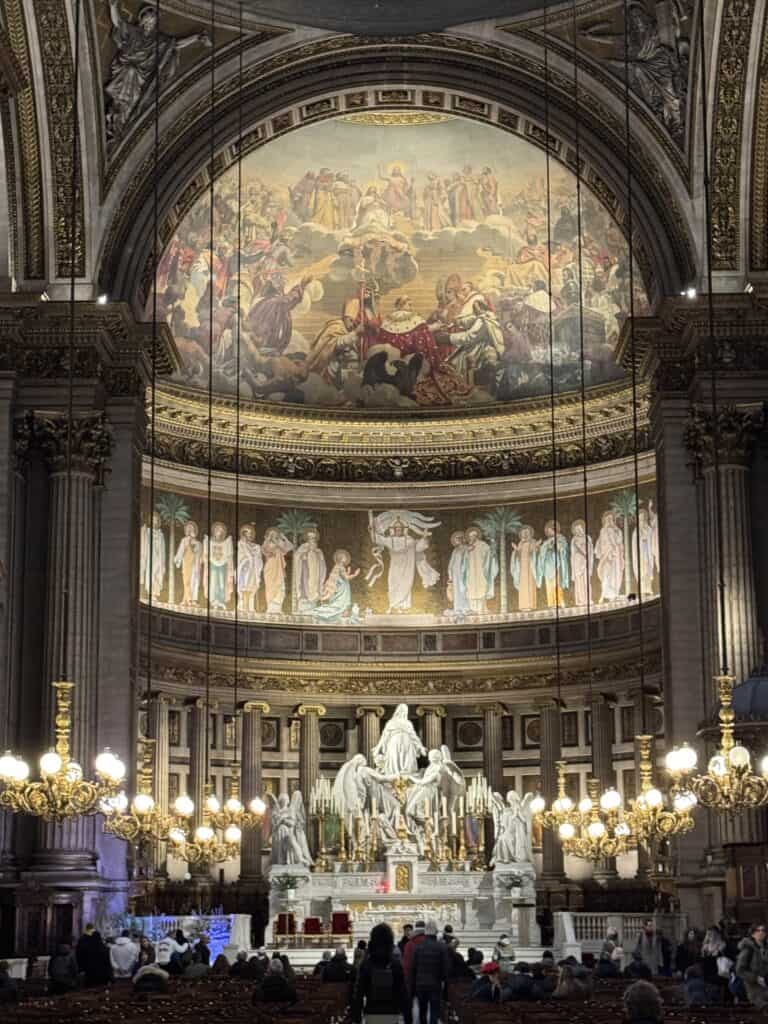
At the high altar, a marble sculpture by Carlo Marochetti depicts St. Mary Magdalen being lifted to heaven by angels, a reminder of the mercy and spiritual transformation she experienced.
The Place de la Madeleine (French for Plaza of Magdalen) around the church is cute and has lots of high end shopping stores and fancy food boutiques, including two famous macaron shops: Fauchon and Ladurée.
Where to find daily Masses and Confession
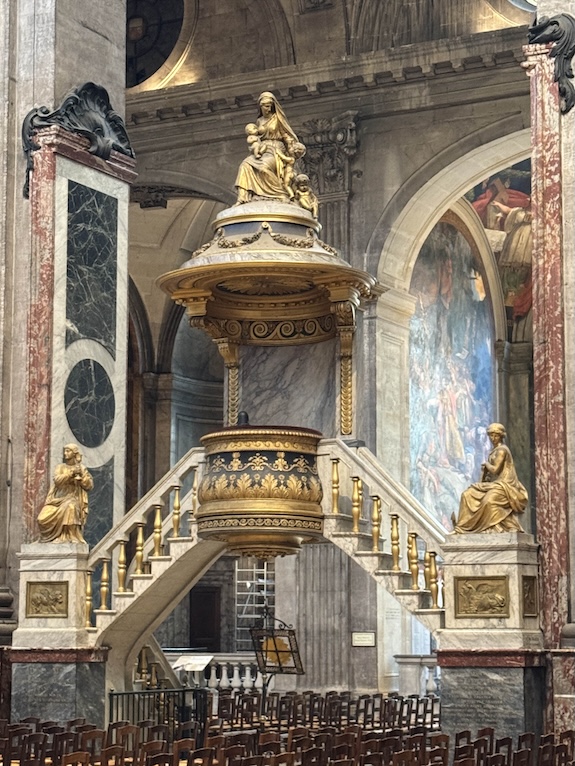
Paris has many catholic places of worship offering daily liturgies and sacramental opportunities.
- Finding Daily Mass: This website is a helpful tool for locating Mass times across the city.
- English-Language Masses:
- While most churches offer Mass in French, a few serve the international Catholic community in English. St. Joseph’s Church near the Champs-Élysées, has all of its Masses in English.
- Traditional Latin Masses: Several churches regularly celebrate Mass in the Extraordinary Form of the Roman Rite
- Saint-Roch (1st arrondissement) offers sung Sunday Masses celebrated by diocesan priests.
- The Centre Saint-Paul (2nd) is led by the Institute of the Good Shepherd.
- In the 7th arrondissement, the chapels of Notre-Dame de la Purification and Saint-Louis at the École Militaire provide a more intimate setting.
- Saint-Eugène–Sainte-Cécile (9th), known for its Schola offers a vibrant liturgical life including confessions, Vespers, Eucharistic adoration, and many activities for youth and families.
- Notre-Dame-du-Lys (15th), served by diocesan clergy, a priest from the ICRSP, and another priest from the FSSP.
- At Sainte-Jeanne de Chantal (16th) and Sainte-Odile (17th) in the western part of the city, served by diocesan priests.
- Click here for updated Mass times.
- Confession Availability:
- Major pilgrimage churches like Sacré-Cœur, Notre-Dame, and the Rue du Bac Miraculous Medal Chapel offer regular confession, often before or after Mass. Priests typically hear confessions in multiple languages, depending on who is available.
- Sacré-Cœur, in particular, offers confession daily from morning through early evening.
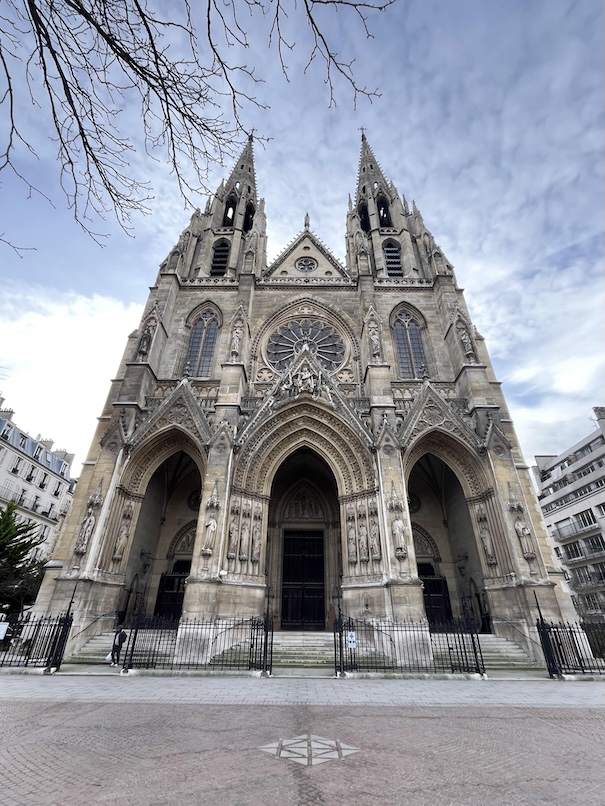
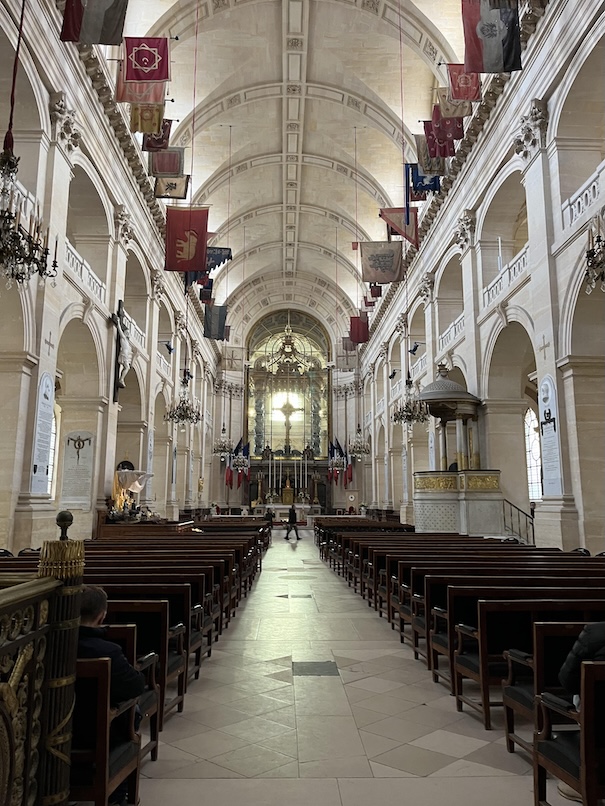
Catholic Bookstores & Religious Souvenirs
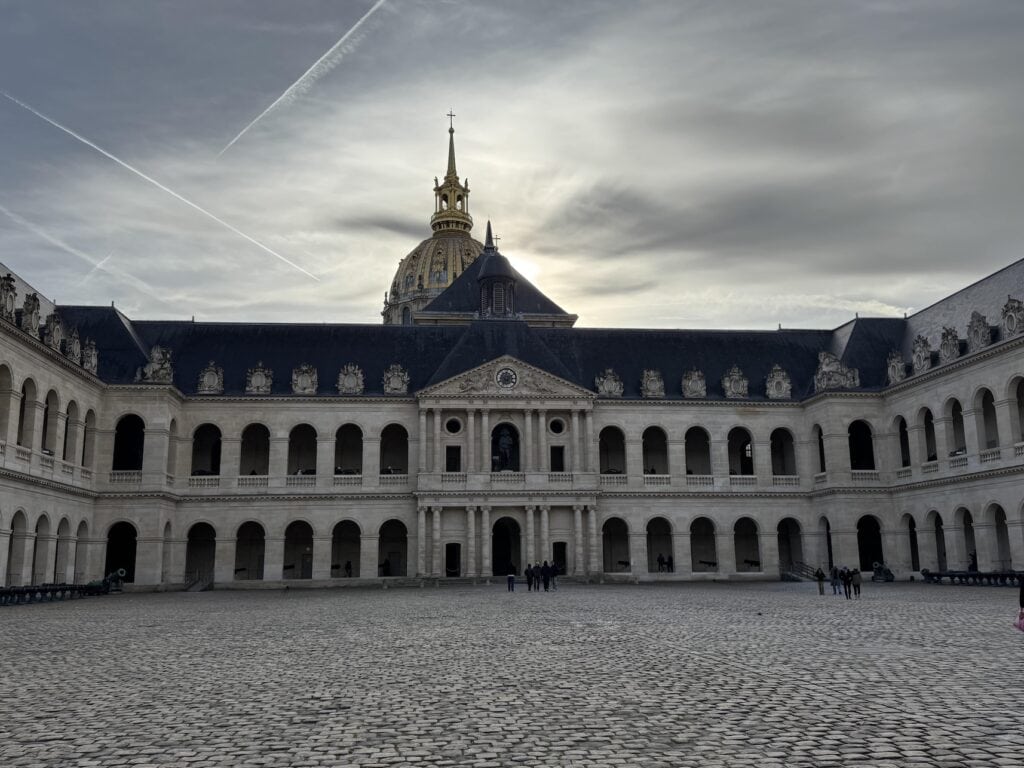
Whether you’re looking for a spiritual book, a rosary to commemorate your pilgrimage, or a Miraculous Medal to share with a loved one, Paris has wonderful Catholic shops to explore.
- La Procure: 3 Rue de Mézières, 75006 Paris, France
- Just steps from St. Sulpice, this large Catholic bookstore offers an extensive selection of theological works, lives of the saints, liturgical books, and spiritual classics (mostly in French, but some titles in English too).
- Rue du Bac Gift Shop:
- As mentioned above, inside the Chapel of Our Lady of the Miraculous Medal, there’s a small Catholic shop. Here, you can purchase authentic Miraculous Medals, and sometimes you can have them blessed directly at the chapel.
- Shops Near Sacré-Cœur:
- Souvenir shops selling rosaries, icons, statues, and medals line the streets leading to the Basilica of Sacré-Cœur. Look for ones closer to the basilica entrance for higher quality religious items.
Catholic Events & Liturgical Celebrations
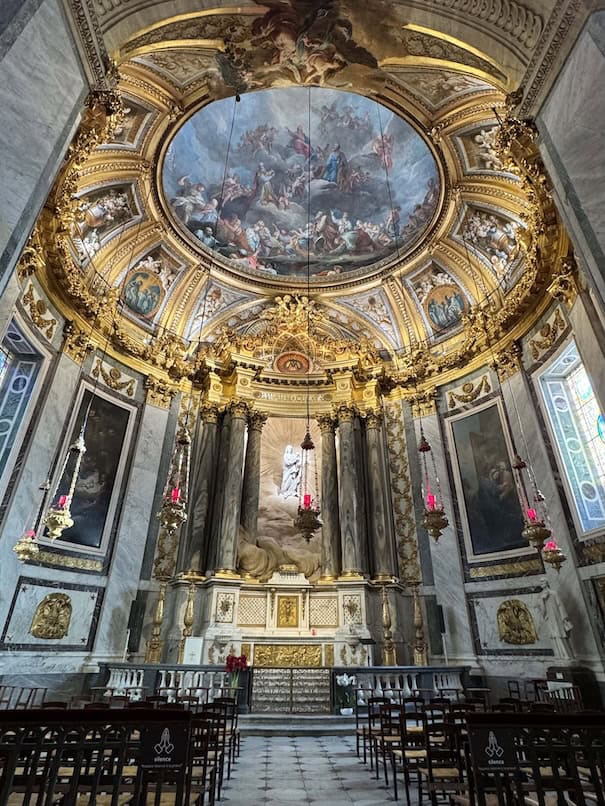
If your pilgrimage coincides with one of the Church’s major feasts, you’re in for an unforgettable experience. Paris comes alive with public processions, special liturgies, and centuries-old Catholic traditions.
- Corpus Christi (Fête-Dieu):
- In early summer (usually June), you can witness beautiful Eucharistic processions through the streets of Paris. These often begin at major churches like Notre-Dame or Sacré-Cœur, with clergy, religious, and laypeople walking in reverence behind the Blessed Sacrament.
- Assumption of the Blessed Virgin Mary (August 15):
- The Assumption is one of the most important holy days in France, celebrated with solemn Masses and Marian processions, especially at Notre-Dame, Rue du Bac, and Sacré-Cœur. Since King Louis XIII consecrated France to Mary in the 17th century, this feast holds deep national and spiritual significance. Each year, Parisians and pilgrims gather in great numbers to honor the Blessed Virgin with heartfelt devotion.
- Christmas & Easter Liturgies:
- Paris churches offer reverent liturgies for the major feasts. Midnight Mass at Sacré-Cœur or Easter Vigil liturgy at Notre-Dame (when possible) are beautiful. Arrive early, as these services are often full.
- The Chartres Pilgrimage (Pentecost Weekend):
- Though technically outside of Paris, this 3-day walking pilgrimage from Notre-Dame de Paris to Chartres Cathedral is one of the most famous traditional pilgrimages in France. Thousands of pilgrims join every year, praying, singing, and walking nearly 100 kilometers. Even if you don’t walk it yourself, seeing the departure from St. Sulpice is a sight to behold.
Packing List for Pilgrims
Here’s a suggested list of essentials to pack as you visit Paris:
- Small bag or backpack
- Rosary – Great when walking or riding the metro.
- Comfortable walking shoes – Be ready for much walking.
- Modest clothing – Cover shoulders and knees when visiting churches.
- Euros in small bills/coins – For lighting candles or making donations at churches.
- Portable phone charger – Phones can die fast when roaming, navigating and taking photos all day.
- Reusable water bottle – To stay hydrated during hours of getting around the city.
- Optional: A scarf or shawl – For modesty in churches or warmth in cooler months.
A pilgrimage to Paris is unique because it connects centuries of catholic french history with our present lives. You can pray at centuries-old churches in the morning, then walk through the same streets where saints once lived, all while experiencing the city as it is today. In Paris, faith is part of the landscape.
Yours in Christ,
A & D
